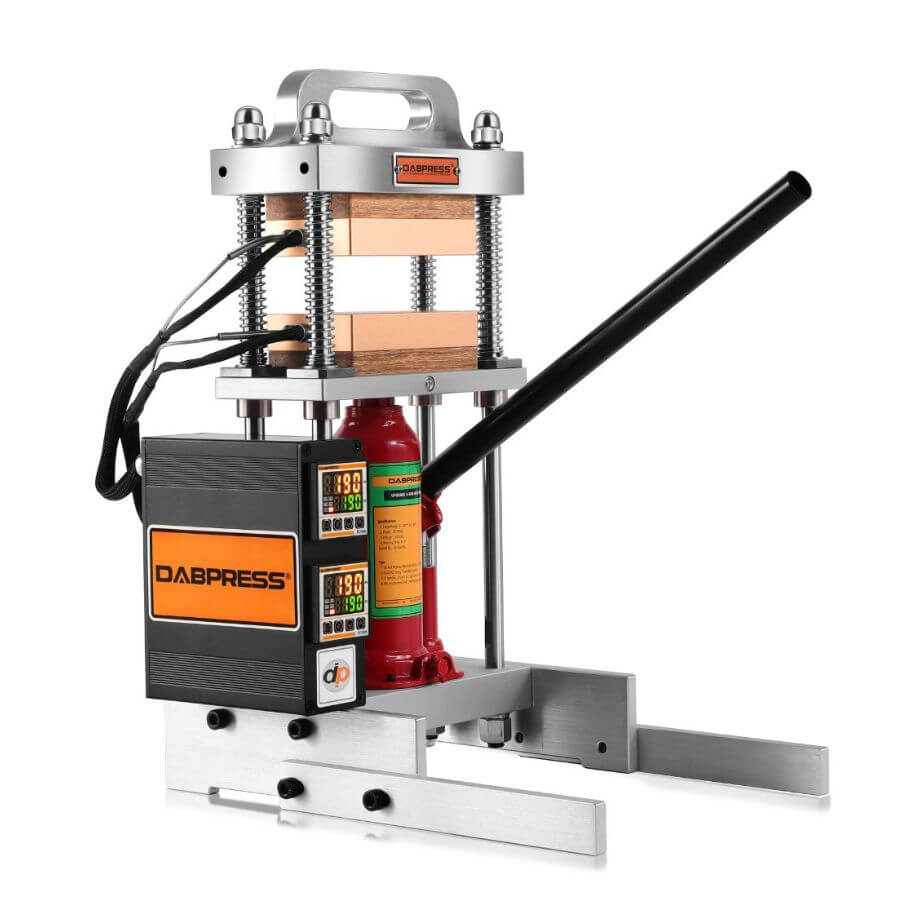How to Maximize Rosin Yield with a Bottle Jack Press (No Pressure Gauge Needed)
Posted by DABPRESS OWNER

At DABPRESS, we believe in empowering crafters with knowledge and safe solutions. While we always recommend using purpose-built rosin presses for optimal results, we understand many DIY enthusiasts use bottle jack setups. In this guide, you’ll learn proven techniques to maximize yields without relying on pressure gauges – all while prioritizing safety.
Why Go Gauge-Free? Understanding the Trade-Offs
Bottle jack presses are affordable but lack the precision of integrated pressure systems. Key limitations include:
❗ Non-linear pressure curves (pump strokes ≠ consistent force)
❗ Risk of overloading the jack or frame
❗ No real-time feedback for resin flow optimization
But with these strategic methods, you can work with your equipment’s limitations:
4-Step Method for Consistent Results
1. Material Prep: The Foundation of Success
Moisture Control:
Cure materials to 62-65% RH using Boveda packs (too dry = low flow; too moist = steam explosion).
Test readiness: Material should hold shape when squeezed but crumble easily.
Puck Perfection:
Use 25-37μm bags for better pressure concentration.
Pre-press material into uniform "pucks" (6-8mm thick) using mold plates.
2. Temperature & Time: Your Primary Levers
Material Type Temp Range Time Guidelines
Fresh Flower 160-175°F 2.5-3.5 mins
Cured Flower 180-190°F 1.5-2.5 mins
Hash/Kief 150-165°F 3-4 mins
Pro Tip: Lower temps require slower pressing – extend time by 30% if using <170°F.
3. Mechanical Pressure Control
The Spacer Method:
Start with 5mm stainless steel spacers between plates.
Pump until plates touch spacers, hold 30 sec.
Replace with 3mm spacers, repump and hold 1 min.
Remove spacers for final press (pump until resistance peaks).
Pump Stroke Counting:
For a 6-ton jack: 8-12 full pumps typically reaches safe max pressure.
Always stop if the handle shows strong rebound!
4. Read the Rosin: Real-Time Feedback
Ideal Flow: Slow, steady golden stream (adjust heat/pressure if too fast/slow).
Warning Signs:
Darkened resin = too hot
Foamy texture = excess moisture
Cracked puck = uneven pressure
Safety First: Non-Negotiable Practices
🔥 Heat Management:
Never exceed 220°F on makeshift plates (risk of scorching and hydraulic oil degradation).
Use IR thermometers to verify plate temp.
⚠️ Load Limits:
Stay under 80% of jack’s rated capacity (e.g., 4.8 tons max on a 6-ton jack).
Replace jacks showing oil leaks or sluggish retraction.
🛡️ Workspace Setup:
Anchor press to a heavy base.
Wear heat-resistant gloves and safety glasses.
When to Upgrade: Signs You’ve Outgrown DIY
While bottle jacks serve beginners well, consider professional equipment if you notice:
🔄 Frequent repressing to hit target yields
🕒 Inconsistent results batch-to-batch
⏳ Excessive time spent on pressure guesswork


